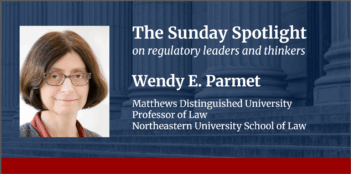
Although Congress has failed to take big steps to ensure access to COVID-19 care, states are taking small but significant steps.
In the United States, the latest estimates show that COVID-19 causes about 1,000 deaths per day with the total currently nearing 100,000, revealing deep inequities and gaps in access to health care in the United States. These problems are caused both by the systems of financing, or paying for medical care, and by the organization and regulation of the delivery of medical care.
Even before the pandemic, a fragmented system of public and private financing left nearly 30 million people uninsured and many more underinsured. The gaping holes in the U.S. financing system have undoubtedly impeded access to COVID-19 medical care for some people and have threatened financial insecurity and medical bankruptcy for many more.
The problems many people face in accessing health care reach well beyond the inability to pay for care. Health care delivery systems have been ill-equipped to respond to the escalating cases of COVID-19, even for people who could pay. In addition, the states hardest hit by COVID-19 lack the provider workforces, equipment, and work processes to be able to treat comprehensively and safely both COVID-19 and the other serious medical conditions that people still face during the pandemic.
Even as the U.S. Congress has authorized over $2 trillion in relief for corporations, health care providers, small businesses, and individuals, it has done shockingly little to solve the problems that prevent many Americans from getting and affording the treatment they need during this pandemic. Congress began its relief work by mandating that, in most cases, people with insurance—and, in some cases, even people without insurance—can access COVID-19 testing for free. But Congress has said little about what happens if someone tests positive, and some people who need to seek treatment will face unaffordable medical bills.
The federal government has largely punted to the states the challenge of solving this complex crisis of access, with the Trump Administration going so far as to refuse to help move respirators across state lines to those states in greater need. States are not especially well positioned to address problems of a pandemic’s magnitude and scope. Especially with respect to health insurance, states only have regulatory authority over a minority of health plans.
Yet states have shown great adeptness at using the tools that are in their control. We offer here three of the many examples of steps that states have taken to use their regulatory authority to maximize access to medical care during the pandemic.
1. Helping the Uninsured (a Little). Although states are not well-positioned to transform how Americans pay for care or to solve gaps in coverage, some states have maximized the ability of their Medicaid programs to fill some gaps for low-income and uninsured people.
For example, 20 states have expanded their Medicaid programs, a federal and state partnership that pays for care for qualifying low-income populations, to pay for COVID-19 testing and testing-related services for the uninsured. Some states are also making it easier for people to qualify for or enroll in Medicaid by, for example, allowing self-attestation of eligibility criteria, applying less-restrictive ways of calculating income eligibility, or extending presumptive eligibility at the point of care. States that have fees, premiums, deductibles, and other charges to enroll in or use medical care are in some cases eliminating these expenses.
These state efforts are laudable. But these measures and states’ ability to regulate health plans are also limited.
States have more authority in retooling health care delivery regulations. The onslaught of COVID-19 seems to have created the political will to enact state-level regulatory reforms that have long been needed and justified but never before possible.
2. Addressing Shortages of Providers. The quick spread of COVID-19 has brought with it some panic that the United States would face a shortage of health care providers. Compounding this concern is the fact that the United States has a disproportionately large share of specialists among its physician workforce, some of whom are less adept at primary care.
States have taken several steps to try to ensure that people do not lack access to care because of a shortage of providers available to treat them. For instance, all 50 states have waived some of their in-state licensure requirements. Medical boards conduct medical professional licensing on a state-by state basis, which prevents people from practicing outside of the state in which they are licensed—a fact that poses problems when one state faces an emergent need for more providers, as New York did in the case of COVID-19. In response, states have allowed for some combination of permitting out-of-state physicians to practice within the state, expediting or waiving licensure renewal, and waiving continuing medical education requirements. Some states have expanded these licensure waivers to non-physician providers, such as nurse practitioners.
States are also enabling clinicians to practice to the so-called top of their licenses. Licensure laws, called scope-of-practice laws, define the outer bounds of health care professionals’ licenses. In many cases, they limit what physician extenders—such as nurses, nurse practitioners, and physician assistants—can do legally, which may not align with their training and professional competence. For example, these limits dictate who can diagnose conditions, prescribe medication (including controlled substances), and treat chronic conditions independent of physician supervision.
Most states’ laws also include supervision requirements, not only detailing the degree to which physicians supervise nurse practitioners and physician assistants, but also limiting the number of such medical personnel that physicians can supervise at a time.
Professional associations, such as the American Medical Association, which largely represents physicians, have long relied on state licensure laws to defend their turf by claiming that care and oversight by a physician is needed for patient safety. Studies suggest, however, that scope-of-practice laws drive up the cost of health care and make care delivery less efficient. In states where nurse practitioners are given greater independence to practice, the costs of health care are lower, and more liberal licensure laws improve access to primary care by increasing the number of nurse practitioners in the state. Moreover, a 2014 report by the Federal Trade Commission found that restrictive scope-of-practice laws may “exacerbate provider shortages and thereby contribute to access problems, particularly for underserved populations that already lack adequate and cost-effective primary care services.”
As states face shortages of primary care providers in light of COVID-19, relaxing regulatory constraints can enable states to meet growing health care needs by encouraging a more efficient use of the health care workforce.
3. Expanding Access to Telehealth. Another way that states have responded adeptly to the pandemic has been to expand access to telehealth so that people can see providers without risk of contracting COVID-19. Especially in states that either have shut down entirely, or have only partially reopened, many patients may hesitate to seek necessary care if they need to go in person. Furthermore, social distancing recommendations counsel against using public transportation, making it difficult for many people to access medical care outside of their homes. States have thus turned to telehealth—the provision of health care using electronic information and telecommunications—both by relaxing restrictive regulations and seeking affirmatively to increase its use.
Just as all 50 states have waived in-state licensure requirements for out-of-state physicians, 49 states have issued waivers allowing out-of-state physicians to practice telehealth for patients within the state. In addition, several states are waiving requirements that physicians have treatment relationships with patients before providing telehealth services. At the same time, the Office for Civil Rights at the U.S. Department of Health and Human Services has lifted the federal standards for encryption of videoconferencing technology, indicating that it would not penalize health care providers who use non-encrypted, private-facing video platforms, such as FaceTime, Skype, or Facebook Messenger. Some states, including New York, have already implemented such policies.
States have also lifted “originating site” requirements for Medicaid, which require patients to travel to a specified physical location, such as a federally qualified health center or rural health clinic, to access telehealth services. In line with recent trends to allow patients’ homes as originating sites, this shift allows vulnerable populations to comply with stay-at-home orders while maintaining continuity of care.
Finally, telehealth visits are sometimes reimbursed at lower rates than in-person visits, which may deter providers from using them. To help increase provider participation, states such as Rhode Island are requiring parity in payment for telehealth and in-person visits.
These three examples—assisting the uninsured, addressing provider shortfalls, and promoting telehealth—are clearly not the only steps states are taking to help ensure Americans receive adequate health care during the pandemic. But they are important steps, and some of the regulatory changes states have made to implement these solutions may remain in place and continue to deliver benefits even after the current public health crisis is over.
Perhaps at no greater time than today has access to health care been so critical. States have quickly adapted to use the tools under their control to try to increase access to medical care during the COVID-19 pandemic and make necessary care more affordable. Now, it is time for Congress to address what is in its control—namely, the fundamental gaps in how the United States pays for health care that continue to leave a large portion of the population either uninsured or underinsured and more physically and financially vulnerable during times of crisis.
This essay is part of an ongoing series, entitled Comparing Nations’ Responses to COVID-19.





